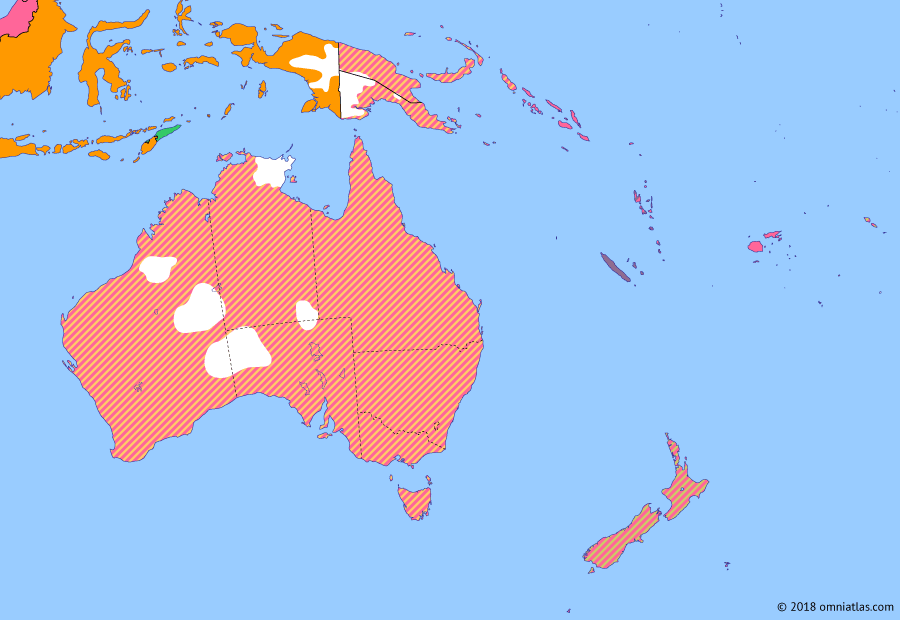Australasia 1941: Attack on Pearl Harbor
8 December 1941
8 Dec 1941
Attack on Pearl Harbor
8 Dec 1941 Attack on Pearl Harbor
23 Jan 1942 Japan Comes South
19 Feb 1942 Bombing of Darwin
8 May 1942 Battle of the Coral Sea
6 Sep 1942 Kokoda Trail
15 Nov 1942 Guadalcanal Campaign
14 Jan 1943 Battle of Timor
15 Dec 1943 Operation Cartwheel
17 Jun 1944 Western New Guinea Campaign
6 Aug 1945 End of the Pacific War
The rise of Japanese power had worried Australia and New Zealand since before the Great War, a fear that was not assuaged when Japan joined them in the division of Germany's Pacific empire. In the 1930s Japan attacked China, then took advantage of the fall of France in 1940 to occupy French Indochina. When the United States responded with sanctions, the Japanese bombed their navy at Pearl Harbor.
